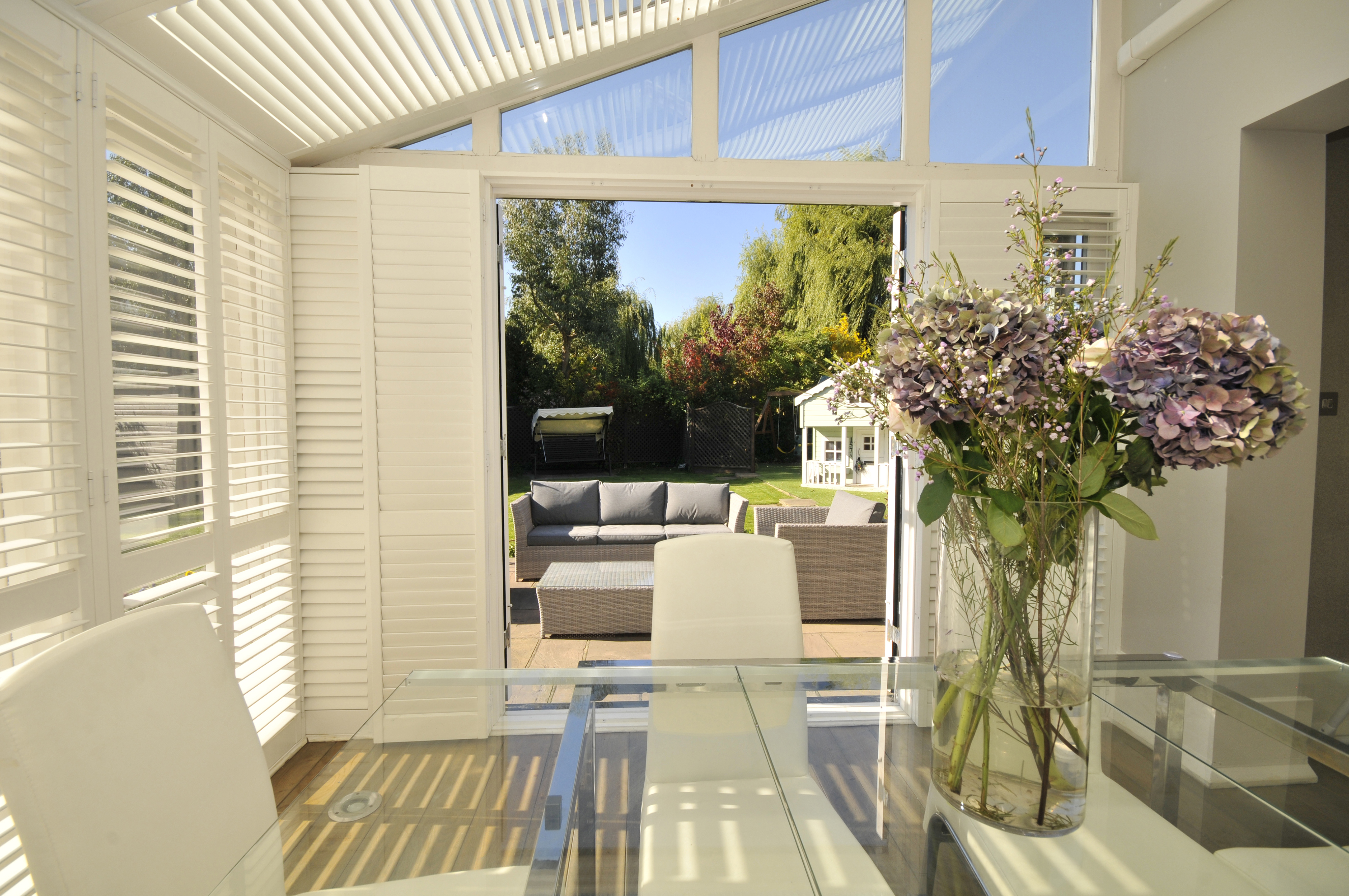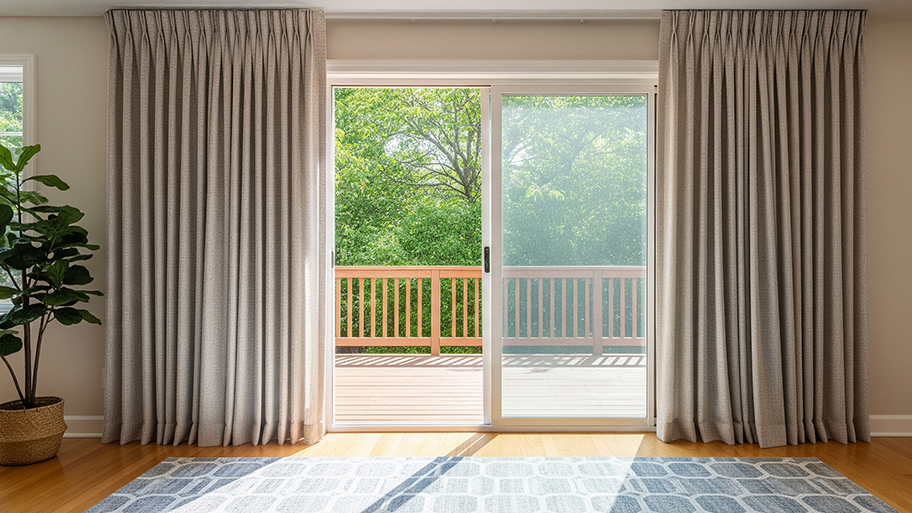
Blinds installation costs in Seattle, Washington, are higher than the national average. Invest in moisture-resistant materials to withstand the rainy season.
Let the sunshine in or darken your cave


Both light-filtering and room-darkening window treatments provide protection from harmful UV rays.
Light-filtering coverings offer a maximum of 95% coverage, while room-darkening window treatments can conceal up to 99% of light.
Room darkening window treatments have the added bonus of also insulating from heat and cold.
Light-filtering coverings are less expensive than room-darkening treatments but don’t offer as many benefits.
We wear sunglasses to protect our eyes, sunscreen to protect our skin, and even put sun shades in our vehicles to shield the interior from sun damage and excessive heat. So, why wouldn’t we do the same for our homes?
Light-filtering and room-darkening window treatments not only add a finishing touch to your interior design but also protect your upholstery, artwork, and flooring from harmful UV rays. However, if you’re stuck between the two, we’ll help narrow down which is best for your home and how to find the best company to install blinds.
The fabric’s weave determines a window treatment’s opacity––the ability to let in light. Opaque materials (thicker weaves, fibers, and yarn) block more light, while sheer, semi-opaque fabrics invite more light into your home. Light-filtering window coverings will block less light than room-darkening treatments. Blackout curtains, on the other hand, are one of the best ways to blackout windows for sleeping, as they block out all the light completely.
Here’s a breakdown:
Light-filtering window coverings: block 95% or less light
Room-darkening window coverings: block 96–99% light
Blackout window coverings: designed to block 100% of light
When choosing between light-filtering and room-darkening window coverings, it’s helpful to know their benefits and drawbacks. Light-filtering window coverings are best for rooms where you want to block some light but not make things cave-like.
| Pros | Cons |
|---|---|
| Softens incoming light | Don’t block sound |
| Privacy | Not suitable for all rooms |
| Saves energy | Don’t provide insulation |
Best For: Homes that face extreme direct sunlight and homeowners that want to protect their floors
Available in an array of styles, colors, and patterns
Offer some privacy
Complement your existing shades and drapes
Soften incoming direct light
Work well in living rooms, kitchens, and family rooms
Save energy by relying less on lighting fixtures
Don’t block sound as much as room-darkening window coverings
Provide a limited amount of privacy when used without other window coverings
They aren’t as suitable for bedrooms, nurseries, and media rooms
Don’t insulate rooms to extreme heat and cold

Room-darkening window treatments are most appropriate for bedrooms, nurseries, bathrooms, and home theaters because they’re designed to block out light.
| Pros | Cons |
|---|---|
| Block natural light | Causes rooms to feel dark during day |
| Keeps glare off screens | Need to rely on artificial lighting |
| Offers privacy | Can increase energy bills |
Best For: Homeowners with young children that need to block out light for sleep
Block natural light in bedrooms and nurseries for a sound sleep
Keep glare and light away from media screens and TVs
Block out street lights, car headlights, and other light pollution from entering your home
Offer more privacy than sheer and light filtering shades, curtains, and blinds
Decrease heating and AC energy bills by blocking heat and cold
May cause living rooms, kitchens, and family rooms to feel dark during the day
Make you rely on the use of artificial lighting like lamps and light fixtures
Just like you should always use sunscreen on the beach, you should protect your home from ultraviolet rays. They can weaken fabric fibers and bleach, fade, and discolor your favorite things in your home, including:
Furniture and upholstery
Artwork
Family photographs
Wood flooring and carpeting
The color from your walls
Consider the size and placement of your windows when thinking about lighting and privacy. A large bay window will let in a lot of light, but offer limited privacy if facing a busy street or neighbor.
Both light-filtering and room-darkening window treatments come in a wide array of stylish designs, fabrics, colors, and patterns, making them easy to complement many decor styles.
Whether you want a room-darkening Roman shade to complement a modern living room or light-filtering lace curtains for your French country-inspired kitchen, you can find stylish window treatments in both opacities.
The flexibility to adjust the amount of light that comes into a room makes your window treatment more versatile.
Light-filtering shades, blinds, and curtains let you control the amount of light you want to let in, whether you want a soft, warm glow or less light. Room-darkening window treatments, in contrast, don’t allow you to vary the light.
Reducing the amount of natural and artificial glare shining through your windows makes it easier on your eyes whether you’re sleeping in your bedroom, reading a novel, or watching TV.
Room-darkening Roman shades, roller shades, solar shades, and cellular shades are the best options to minimize glare, although light-filtering treatments will also cut out a portion of the sun.

While light-filtering blinds aren’t transparent, viewers passing by your window may be able to see your shadow as you move about the room.
Room-darkening options provide better privacy for bedrooms and bathrooms.
The good news is window coverings generally reduce heating and cooling costs and save energy. According to the Department of Energy, 30% of heating energy escapes through windows.
An insulating window covering will keep the heat out in summer and keep the cold away in the winter. The amount of energy you’ll save comes down to the type of window treatments you get.
Room-darkening options insulate your home more efficiently because they’re made from heavier fabrics.
Window treatments come in a variety of price points, depending on their construction, customizations, and technology. Room-darkening window coverings made from heavier fabrics tend to cost more than light-filtering coverings made from lighter fabrics.

From average costs to expert advice, get all the answers you need to get your job done.

Blinds installation costs in Seattle, Washington, are higher than the national average. Invest in moisture-resistant materials to withstand the rainy season.

Estate shutters can add a stately appearance to your home and block out light. Learn how much estate shutters cost, depending on window size and material.

Looking to step up your home’s interior with window treatments? Use this guide to blinds installation cost to set an appropriate budget for your project.

Frayed blind strings can make your window blinds work ineffectively. Learn how to DIY restring blinds and fix cords in this step-by-step guide.

Looking to better insulate your windows? Read this guide to the best insulating window treatments that will help you save money.

Blinds, shades, and curtains are all great window treatments for sliding glass doors that will allow you to control the amount of light you let into your home.